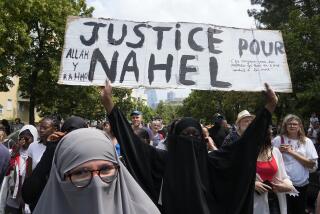August 18
- Share via
Recently I was struck by the unfathomable names of many Paris streets. We all know the inspirations for the Place Charles de Gaulle and the Rue Bonaparte. But even a French friend of mine who has lived in Paris for 30 years couldn’t tell me why a short street in the 7th arrondissement, near the Eiffel Tower and the Champs de Mars, bears the name of General Jacques Camou. And what about Rue Blondel in the 2nd and 3rd and Avenue Georges Mandel in the 16th?
To solve these questions, I consulted the two-volume “Dictionnaire Historique des Rues de Paris,” by Jacques Hillairet and Pascal Payen-Appenzeller, in the reference section at the American Library in Paris, which happens to be on the Rue du General Camou. It was only marginally de-mystifying about the general, who was born in 1792 and died in 1868, when the street was given his name.
Rue Blondel celebrates François Blondel, a 17th century architect on the payroll of Louis XIV, first director of the Académie d’Architecture. His lectures were published in book form, a standard text for architecture students at the time, reflecting his admiration for the classical style, as articulated by Vitruvius. His masterwork--the Porte Saint-Denis--is around the corner from the Rue Blondel. The “Dictionnaire” doesn’t discuss Blondel’s personal habits, so we can only speculate about how he would react to find that his street’s chief commercial enterprise is now prostitution.
The Boulevard Georges Mandel is named for the man otherwise known as Louis-Georges Rothschild, a French statesman in the 20th century. When the Nazis rolled across France, he opposed making peace with them, then fled to Morocco, where he was arrested. A Jew, he was sent to Buchenwald, where he was killed by French collaborationists in 1944.
More to Read
Sign up for The Wild
We’ll help you find the best places to hike, bike and run, as well as the perfect silent spots for meditation and yoga.
You may occasionally receive promotional content from the Los Angeles Times.




